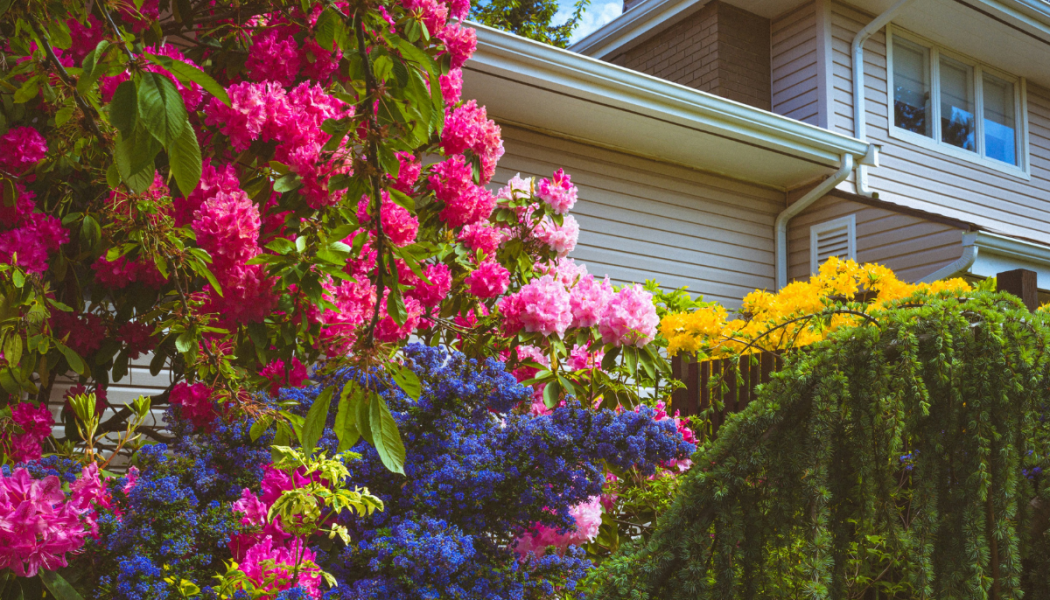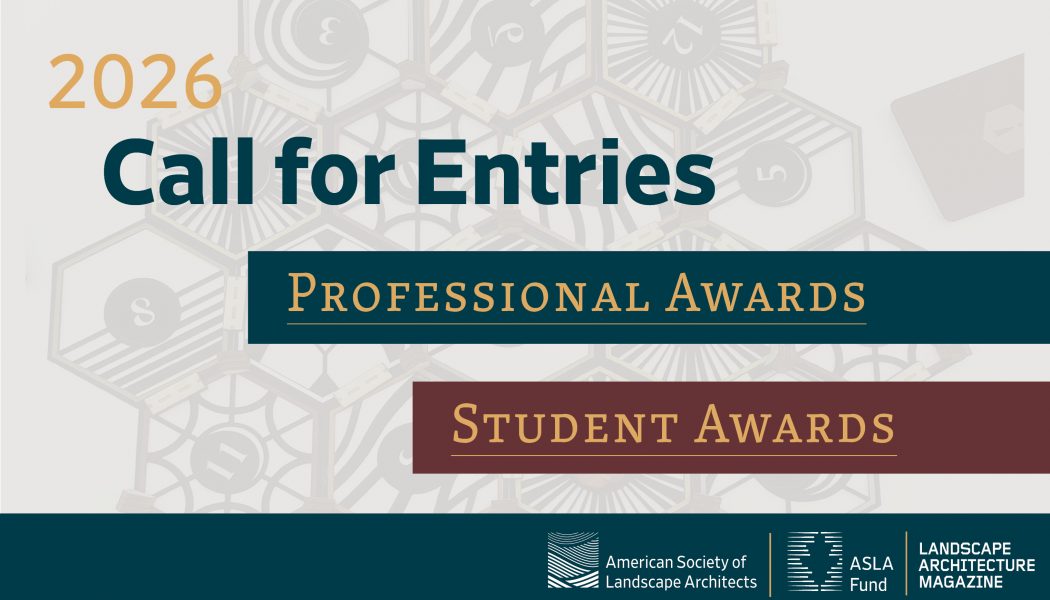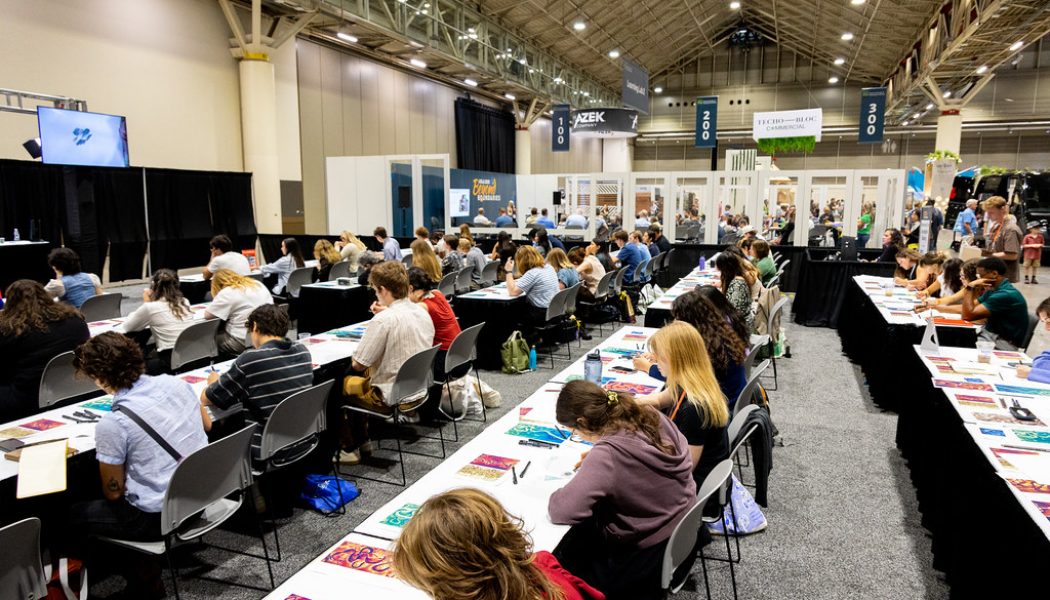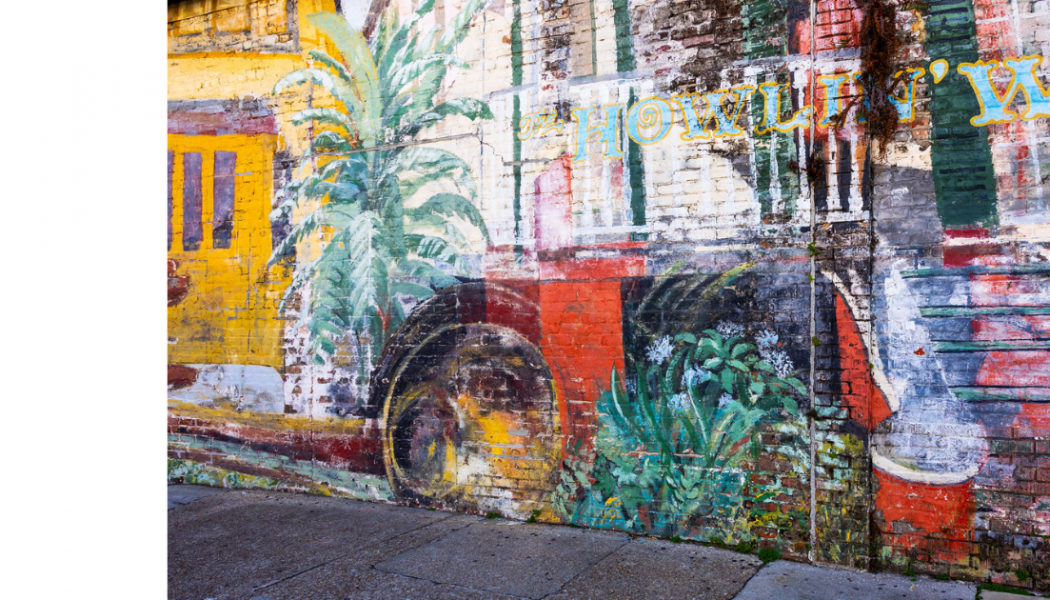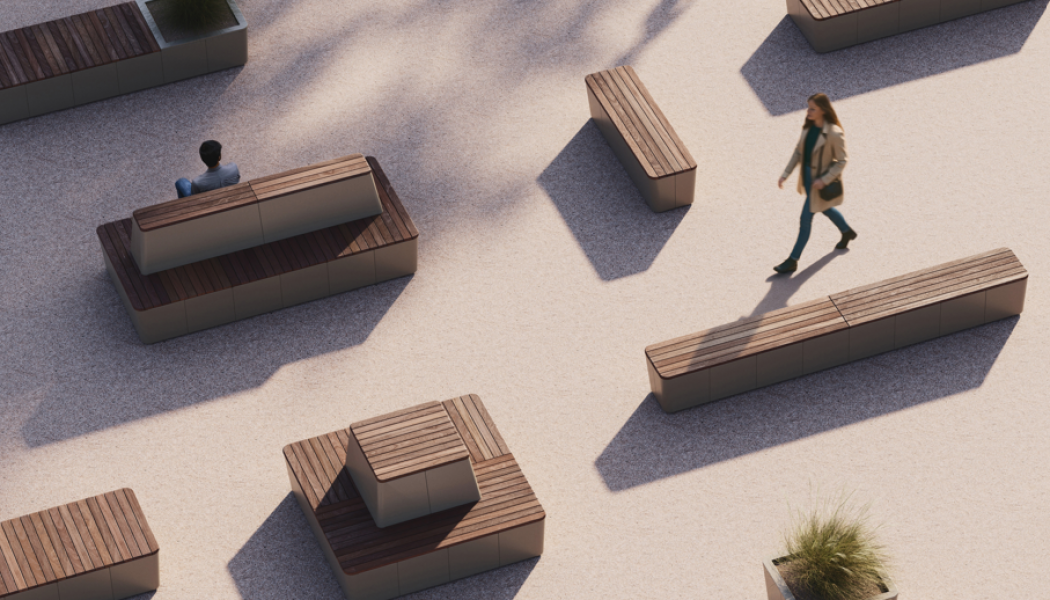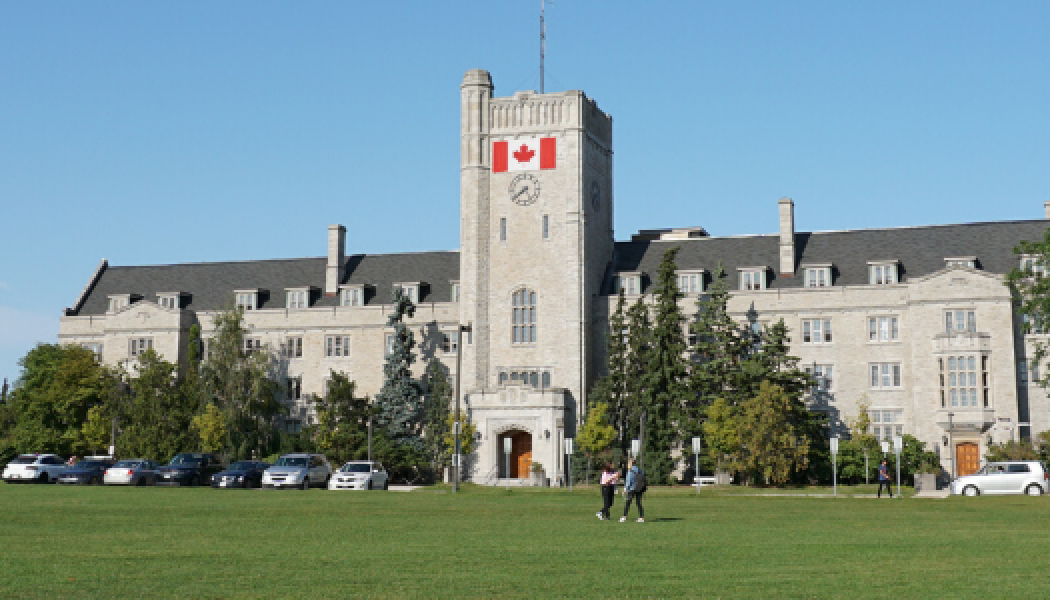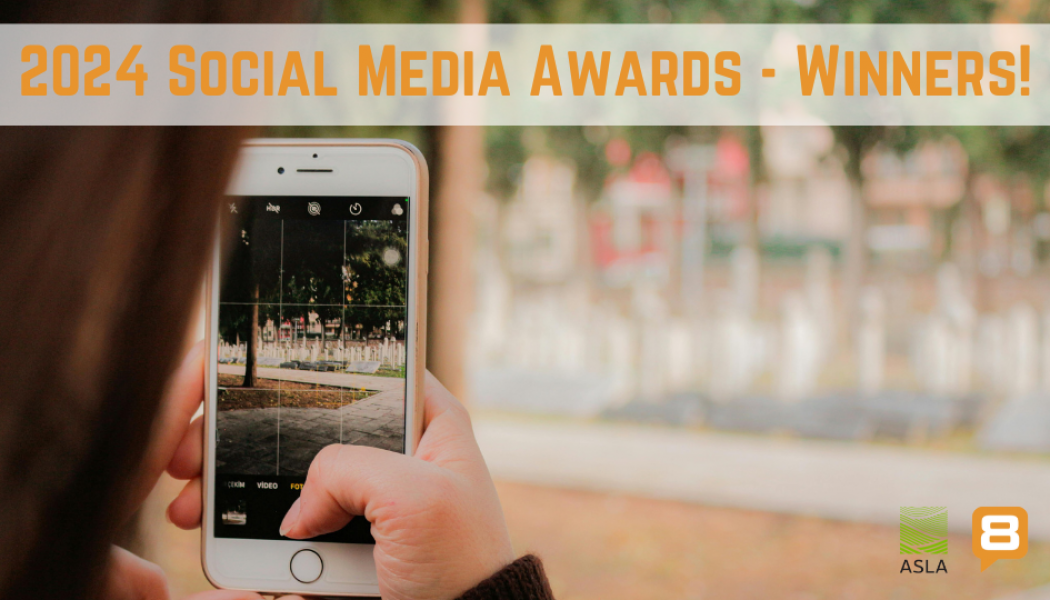Cover Story
Posts to be featured on the Home Page Slider
Residential Designers: What’s in Bloom for 2026?
As we welcome the new year, the crew at Land8 is reviewing our resolutions. Top among them: Connecting with our peers in the residential landscape architecture, design, architecture, horticulture fields, and beyond on their projects for the year ahead. What materials, techniques, tools, and cool gadgets do you hope to use in 2026? Weigh in below! Loading…
News You Can Mulch
Between tending to clients and designing site plans, to keeping up with professional development trends, it’s easy to lose track of the latest industry news. That’s why we rake the internet for the freshest information relating to landscape architecture, planning, gardening, and more–all for busy landscape architects and industry partners. Here’s the latest for the week of December 15, 2025. → Rare Talipot palm bloom continues in Rio as trees near end of life In a park in Brazil, several decades-old trees bloom simultaneously for the first and only time. → The Bay Area neighborhood most vulnerable to sea level rise is also sinking: “A right now problem” See how one California community is seeking solutions to address sea level rise. → Hilton Hea...Read More
Gifts for Landscape Architects, Designers, Gardeners, and More!
The holiday season is upon us! If you’re anything like us, it likely snuck up on you…again. Do you have someone in your life who loves landscape architecture? Whether they’re a professional designer or just a would-be gardener hoping to turn their black thumb a little greener, our friends at Landscape Architecture Magazine have your back. They asked over a dozen professional landscape architects and designers what they wished someone would gift them. See their recommendations after the jump. Then, tell us in the comments what’s on your holiday wish list! Landscape Architecture Magazine Gift Guide
ASLA 2026 Professional and Student Awards Call for Entries
Showcase the best of landscape architecture—ASLA’s 2026 Professional and Student Awards calls for entries are open. Professional Awards The ASLA Professional Awards honor the best built and unbuilt work worldwide. Submit early to save with tiered pricing: Early Bird deadline: January 9, 2026 ALL materials due (all professional entrants): February 6, 2026, 11:59 p.m. PST Recognition: Winners are celebrated at the ASLA 2026 Conference on Landscape Architecture and featured in Landscape Architecture Magazine. Professional Categories: General Design Residential Design Urban Design Analysis & Planning Communications Research Landmark Award ASLA/IFLA Global Impact Award Community Service and other special recognitions. Professional Awards Jury Chairs: General Design, Residential Desig...Read More
Spark Talks: Beyond the Classroom – Bridging Studio to Reality
ASLA invites landscape architecture students to join Spark Talks: Beyond the Classroom – Bridging Studio to Reality, a dynamic five-part webinar series designed to help bridge the gap between academic learning and professional practice. Starting on October 23, these short, engaging conversations bring together emerging professionals—many of whom were students not long ago—to share their experiences, lessons, and insights about transitioning into the workforce. Each session explores a different facet of post-graduate life. The series begins with “Office Life 101,” a high-level overview of what to expect after graduation, featuring voices from large firms, small studios, and public practice. Next, “Marketing Skills/Business Development” offers a behind-the-scenes look at how professio...Read More
The Top Six Things We Saw (and Heard!) at ASLA 2025
The American Society of Landscape Architects recently wrapped up its annual conference. New Orleans, its lush parks, as well as its unique mix of French, Spanish, Creole, and American architecture, provided the backdrop to show off our profession, share wisdom from established landscape architects (or as we like to call them, our new mentors), showcase new ideas from up-and-coming professionals, and bop to some truly amazing live music. While we had a blast exploring the city’s iconic neighborhoods, there’s more to New Orleans than Bourbon Street and beignets. Our feet may ache from all the walking, but our heads and hearts are buzzing with inspiration. Here are a few highlights from ASLA 2025. Appreciation for cultural landscapes: Cities are more than collections of buildings, streets...Read More
Eulo by Forms+Surfaces: Creating Space for Connection, Movement, and Pause
Rooted in biophilic principles, Eulo Seating & Planters by Forms+Surfaces offers a reimagined approach to outdoor placemaking. The collection brings together modularity, durability, and a material-driven design language to support spaces where people move, pause, and connect. Scalable elements, including backed and backless seating and integrated planters, adapt to a wide range of site conditions. Configurations can define social zones, aid wayfinding, or introduce natural moments of pause, all while responding to the flow of people and the surrounding environment. Each layout is designed to feel intuitive, emphasizing clarity and comfort in use. With FSC® certified hardwoods and recyclable aluminum at its core, Eulo reflects a material ethic grounded in sustainability and long-term pe...Read More
The Role of Landscape Architects in Roadway Design Projects
State Departments of Transportation (DOTs) employ landscape architects who often serve as the aesthetic “eye” for transportation construction projects, selecting colors and textures, developing seed mixes, and providing other expertise to help projects blend into the surrounding context. Many DOT landscape architects conduct visual resource clearances through the National Environmental Policy Act (NEPA) process with the end goal of producing visual mitigation measures (see Visual Resources in the Practice of Landscape Architecture for more on this). This article is the first in a series that aims to outline gaps in visual mitigation guidance as well as provide opportunities and solutions to fill these gaps. The first gap that will be addressed is the disconnect between visual mitigation an...Read More
Plant Production for Landscape Architects and Designers
How often have you gotten excited about a plant you’ve encountered and enthusiastically included it in a design – then had your hopes dashed when a contractor just can’t find it anywhere? Whether or not a plant performs well in the landscape is an entirely different matter from its ease of production in a nursery context. Many excellent plants for landscape are difficult to produce. Some are difficult to propagate, others don’t thrive in a nursery setting, many are infuriatingly slow. When you ask – “why isn’t [fill in the blank plant] available”, there probably are reasons. Those might not be reasons that matter to you as a landscape architect, but they affect the material that you have to work with so it’s good to understand them. Plants don’t end up in nurseries just becaus...Read More
Plant Hardiness: What Is It and What Does It Mean to the Landscape Architect?
Hardiness is a term that comes up frequently, often in discussions of climate. What horticulturists mean by hardiness may be different from what landscape architects intend when considering plants. To horticulturists, plant hardiness typically refers to a specimen’s cold hardiness. This is just one of the many characteristics of a plant that will affect its performance. If the designer is concerned about other qualities like drought or heat tolerance, that needs to be clarified. Plant hardiness is designated by a USDA Hardiness Zone rating. The map showing these zones can be found here. These zones indicate the average minimum winter temperature that can be expected in that area. There’s a lot of room in that definition: average is not the same as median, or what you may see in the first f...Read More
6 Reasons to Attend LABash 2025
“Gwelf”, not “Gelf”! Known as the Royal City, Guelph is recognized for its charming downtown and rich natural landscape. The city embraces a blend of heritage and modern amenities, creating a welcoming environment for all visitors. With an extensive network of parks, trails, and green spaces, as well as unique cafes and local shops, there’s always something to explore. One highlight is the Guelph Farmers’ Market, held every Saturday—one of the city’s oldest and most cherished community spaces, where locals and visitors alike can enjoy fresh, locally sourced food. Best Campus Food in Canada Did you know that the University of Guelph is consistently ranked as having the best campus food in Canada? With a strong commitment to sustainability, many of the ingredien...Read More
Social Media Awards in Landscape Architecture 2024 – Winners!
Here are the winners of the 7th Annual Social Media Awards in Landscape Architecture presented by Land8 and the American Society of Landscape Architects! Social media has the power to significantly increase the awareness and importance of the profession of landscape architecture, and Land8 and ASLA believe industry leaders in social media should be recognized and promoted. Be sure to follow the winners to help grow and promote the profession! Top 10 Social Media Accounts – LANDSCAPE ARCHITECTURE FIRMS 1. Design Workshop, Inc. – Instagram | LinkedIn We use social media to promote the value of landscape architecture and its role in creating resilient, connected, and beautiful spaces. Our posts highlight DW Legacy Design®—balancing environmental sensitivity, community connection, artistry, an...Read More



